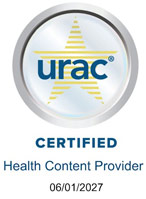Type A insulin resistance syndrome is a rare disease. It causes your body to not process blood sugar well. It means that your insulin isn't used normally by your body’s cells. It may cause other problems. These include skin changes and cysts on the ovaries. It can also lead to high blood sugar (diabetes).
What is insulin resistance?
Insulin is a hormone made by the pancreas. It helps your cells use sugar (glucose) that’s in your blood to produce the energy your body needs to work as it should. Your pancreas makes insulin when your blood sugar level goes up. Insulin resistance means that cells don’t respond to insulin as they should. So the pancreas steps up its insulin production to try to make cells respond.
What causes type A insulin resistance syndrome?
The condition is present at birth. But it's often not seen until the teen years. It’s caused by a change (mutation) in one or more insulin receptor genes. This gene change causes cells to not use insulin normally. Experts aren’t sure why the gene changes. You may have a parent with the condition. If so, you can inherit the gene. Or you may be the only one in your family with the gene change. A family history of type 2 diabetes can rais the risk. So can being overweight (especially around the waist), and having an inactive lifestyle. Your health care provider may suspect this type of diabetes if you need more insulin than is usual to get your blood sugar to the normal range.
Symptoms of type A insulin resistance syndrome
Women often have more symptoms. That's because extra insulin in the bloodstream interacts with hormones during adolescence. This can cause problems with the menstrual cycle and other changes. These can include:
-
Dark, thick, velvety skin in the body folds of the armpits or on the back and sides of the neck.
-
Extra body hair on face, chest, and back.
-
Acne.
-
Hair loss.
-
Light and irregular periods.
-
No periods.
-
Cysts and more scar tissue on the ovaries.
-
Problems with fertility.
-
High levels of the hormone testosterone.
-
Low blood sugar after eating.
-
High levels of fats (lipids) in the blood.
-
High blood pressure.
-
An increased waist size.
Men have fewer symptoms. These can include:
-
Dark, thick, velvety skin in the body folds of the armpits or on the back and sides of the neck.
-
Low blood sugar after eating.
-
Adult-onset diabetes.
Diagnosing type A insulin resistance syndrome
Your health care provider will ask about your symptoms. You'll have a physical exam. You will have blood tests to check your blood sugar levels.
Treatment for type A insulin resistance syndrome
Researchers are looking for the best ways to treat this condition. Your health care provider will talk with you about a treatment plan. This may include lifestyle changes such as a certain diet and exercise. And you may take medicines to help lower your blood sugar levels.
Ask about clinical trials that you can join.
Living with type A insulin resistance syndrome
You’ll need regular checkups to watch your health. This condition may lead to diabetes that is treated with insulin. Over time, high blood sugar can cause diseases of the blood vessels, heart, and other organs.
When to get medical advice
Contact your health care provider if you have:
-
Symptoms that don’t get better or that get worse.
-
New symptoms.
Author: Wheeler, Brooke
© 2000-2025 The StayWell Company, LLC. All rights reserved. This information is not intended as a substitute for professional medical care. Always follow your healthcare professional's instructions.
